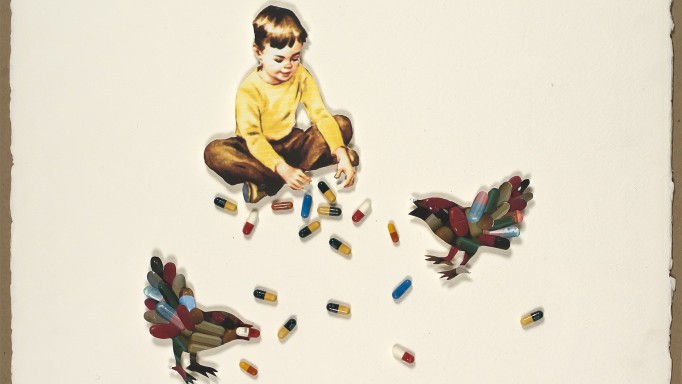Healthy bones contribute to a good quality of life. Strong bones help maintain mobility and prevent falls, a major cause of injury as people age. People living with HIV are more prone to bone loss and fractures at younger ages, but you can take steps to improve bone health.
How is bone produced?
Bone is living tissue largely made up of minerals (primarily calcium and phosphorus) and collagen. Bone marrow, the spongy tissue inside certain bones, produces blood cells. Bone turnover is a continual process. Cells called osteoblasts add new bone tissue, while others known as osteoclasts dissolve and resorb old bone. In young people, bone formation exceeds bone resorption, but after about age 30, resorption starts to outpace bone production, and bone mass naturally declines.
Osteopenia and osteoporosis occur when bone production is too slow, bone resorption is too rapid or both. Osteopenia is an early, milder stage of bone loss. As bone mass and bone mineral density (BMD) decrease further, people may develop osteoporosis, or brittle bones. But osteopenia does not always progress to osteoporosis, especially if measures are taken to prevent further bone loss.
What are the risk factors for bone loss?
Older age is the biggest risk factor for bone loss, as production of new bone tissue fails to keep up with bone destruction. Cisgender women are more likely than cisgender men to develop osteoporosis. Bone density in women decreases dramatically after menopause, while men typically experience a slower decline over time. There is less evidence about bone loss among transgender women and men, but hormone therapy may reduce the risk. White and Asian people are more prone to develop osteoporosis, but Black and Latino people are also at risk. In general, smaller and thinner people have a greater likelihood of developing osteoporosis, though some studies suggest obesity may be a risk factor.
Other factors that contribute to bone loss include family history, low estrogen or testosterone levels, poor nutrition, inadequate calcium or vitamin D intake, heavy alcohol consumption, smoking, certain medications (especially corticosteroids) and lack of physical activity.
How does HIV affect the bones?
HIV and its treatment appear to increase bone turnover and shift the balance in favor of bone loss over bone formation. Studies have shown that people living with HIV are more likely to develop osteoporosis and sustain bone fractures, and they tend to do so at an earlier age than their HIV-negative peers.
People who inject drugs and those with severe immune deficiency are more prone to osteomyelitis, or infection of the bones. More rarely, people with HIV can develop avascular necrosis, or bone tissue death, usually at the hip or shoulder joint, due to insufficient blood flow. Children and adolescents living with HIV may have impaired bone development. However, serious bone problems are less common today than they were before the advent of effective antiretroviral treatment, when people with HIV had more advanced immune suppression.
How HIV affects the bones is not fully understood. The virus can alter metabolism, hormone production and cytokine levels and cause chronic inflammation, all of which can affect the balance between osteoblast and osteoclast activity and lead to bone loss, even among people on effective antiretroviral therapy. Some comorbidities, such as chronic hepatitis C, can also harm the bones.
What’s more, some HIV medications can have a detrimental effect on bone health. Bone loss related to antiretroviral therapy tends to occur within the first year or so after starting a new regimen and then stabilizes.
Some early studies linked osteoporosis to protease inhibitors, but among the antiretrovirals widely used today, tenofovir disoproxil fumarate (TDF) is most often associated with bone loss. TDF (sold alone as Viread) is a component of Truvada—used for both HIV treatment and pre-exposure prophylaxis (PrEP)—and older single tablet regimens including Atripla, Complera and Stribild. Tenofovir alafenamide (TAF), a component of Descovy, Biktarvy, Genvoya, Odefsy and Symtuza, is a newer formulation that’s easier on the bones. Most people who use TDF for HIV treatment or prevention experience only minor bone loss that may not be clinically meaningful, but TAF may be a better option for older individuals and others at risk for bone problems.
How is bone loss diagnosed?
Bone loss is often asymptomatic, and many people do not know they have osteopenia or osteoporosis. If symptoms do occur, they may include joint pain, backache, weakness, a hunched posture and loss of height. Bone problems may only be diagnosed after a person sustains a fracture—typically of the hip, spine or wrist—after a minor fall or even normal activity. Osteoporosis is the leading cause of fractures among older women and men, which, in turn, can lead to frailty, disability and increased risk of death.
Blood biomarker tests can shed light on bone health. For example, they can help distinguish between osteoporosis and osteomalacia, a related condition characterized by soft, weak bones due to vitamin D deficiency.
Bone mineral density tests are used to diagnose osteopenia and osteoporosis. The most common test is a dual energy X-ray absorptiometry, or DEXA, which involves a painless noninvasive scan. Results are typically expressed as T-scores or Z-scores, a measure of how much bone density differs from normal levels in healthy young adults or people of the same age and sex. Osteopenia is usually defined as BMD between 1 and 2.5 standard deviations below that of a 30-year-old, and osteoporosis is more than 2.5 standard deviations below.
HIV care guidelines from the Infectious Diseases Society of America recommend that HIV-positive postmenopausal women and men ages 50 and older should receive DEXA scans to screen for bone loss, regardless of other risk factors. The Fracture Risk Assessment Tool (FRAX) can be used to assess whether younger people are prone to bone loss and fractures, though it tends to underestimate the risk for people living with HIV.
Can bone loss be prevented?
Some osteoporosis risk factors—like age and sex—can’t be changed, but people with HIV can take several steps to slow progression of bone loss.
A balanced diet is key to maintaining bone health. Getting enough calcium is particularly important. If calcium intake is too low, metabolism shifts to leach calcium from the bones to maintain an adequate level in the blood. U.S. guidelines recommend that women ages 19 to 50 and men ages 19 to 70 should get 1,000 milligrams of calcium per day, while women over 50 and men over 70 should get 1,200 mg. Foods rich in calcium include milk, cheese, canned fish with bones and leafy green vegetables. Calcium supplements are widely available, and some foods and beverages have the mineral added, but too much can be harmful.
Vitamin D is necessary for calcium absorption in the gut. The skin produces vitamin D when exposed to sunlight, but many people don’t make enough, especially dark-skinned individuals and those who live in cold climates or spend most of their time indoors. The recommended amount is 600 international units per day for adults up to age 70 and 800 IU for older people. Sources of vitamin D include fortified dairy products, egg yolks, certain fish and liver. Vitamin D supplements can help make up the difference, but high doses can be harmful.
Physical activity builds bone mass, strengthens muscles that support the skeleton and improves balance and coordination, which helps prevent falls. Weight-bearing activities—such as brisk walking, running and climbing stairs—are especially important for bone health, but resistance exercises such as weight lifting are also crucial. U.S. guidelines recommend that adults get 150 minutes of moderate-intensity physical activity or 75 minutes of vigorous activity per week, along with muscle-strengthening activity on at least two days.
Smoking cessation and limiting alcohol consumption also benefit bone health. Tobacco smoking and heavy alcohol consumption suppress bone formation and reduce absorption of calcium. Studies have seen a link between smoking and fractures in current but not former smokers, indicating that quitting is beneficial at any age. Coffee and other sources of caffeine can also interfere with calcium absorption, but there is little evidence that it has a detrimental effect on bone health in people with adequate calcium intake.
How is bone loss treated?
There is no cure for osteoporosis, but several medications can slow, halt or partially reverse bone loss.
Ensuring adequate levels of calcium and vitamin D, using supplements if necessary, is a mainstay of managing bone loss. For postmenopausal women, estrogen hormone replacement therapy can help stave off bone breakdown, and testosterone can do the same for men with low levels. Raloxifene (Evista) is a selective estrogen receptor modulator that has an estrogen-like effect on bones.
Bisphosphonate drugs work by decreasing bone resorption. They include alendronate (Fosamax), zolendronic acid (Reclast or Zometa), risedronate (Actonel) and ibandronate (Boniva). Calcitonin is a hormone that reduces bone loss by regulating calcium levels. Denosumab (Prolia) lessens bone loss by blocking osteoclast activity. Other medications work by promoting bone formation. These include the synthetic parathyroid hormone teriparatide (Forteo), which helps maintain calcium levels and stimulates osteoblast activity. Romosozumab (Evenity) is a monoclonal antibody that both increases bone formation and decreases bone resorption.
These medications reduce bone loss and fracture risk in postmenopausal women and elderly men with osteoporosis, but most have not been studied in people with HIV. Alendronate and zoledronic acid, however, were shown to increase bone density in HIV-positive people when used with calcium and vitamin D supplements in randomized clinical trials. What’s more, these drugs were just as safe and did not cause more side effects in people with HIV.
Finally, research shows that people with a detectable viral load or more advanced immune suppression are more likely to develop osteoporosis and other bone problems, offering one more reason to promptly start and stay on antiretroviral treatment.
Last Reviewed: July 8, 2024














